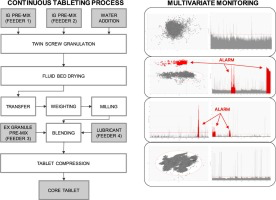- Home
- Blog
- News
- Basics
- Sources
- Agencies, Regulatory & Organisations
- CERSI Excipients Browser
- Excipient Report
- Excipient DMF List
- EXCiPACT Certified Companies
- Excipient Documentation
- Excipient EINECS Numbers
- Excipient E-Numbers
- FDA Inactive Ingredient List
- FDA GRAS Substances (SCOGS) Database
- IPEC Americas
- USP - U.S. Pharmacopeia
- Definitions
- Whitepapers / Publications
- Supplier
- Services
- Media
- Events
- 1st pharmaexcipients Poster Award
- Event Calendar
- Events featured by pharma-excipients
- 4th Annual Formulation & Drug Delivery Congress
- DDF Summit
- ExcipientFest Americas
- ExcipientFest Asia
- Global CompliancePanel
- International Conference and Exhibition on Pharmaceutics & Novel Drug Delivery Systems
- Formulation & Drug Delivery USA Congress
- Laboratory Medicine 2018
- Making Pharmaceuticals Europe
- Making Pharmaceuticals Exhibition
- Pharma Integrates
- PharmaExcipients China @CPhI China
- TTC Technology Training Center
- Jobs
- Online Sourcing
- Contact
05. September 2018
This study aimed to enhance the dissolution rate of isradipine and to avoid the problem of first-pass metabolism using oral fast dissolving films (OFDFs). Isradipine was complexed with hydroxypropyl-beta-cyclodextrin (HP-β-CD) using the solvent co-evaporation technique to produce an isradipine inclusion complex with increased solubility. This complex was evaluated for its solubility and dissolution behavior compared with the free drug. Then, the inclusion complex was formulated in OFDFs. The...
04. September 2018
A decrease in the release rate over time is typically encountered when dealing with hydrophilic matrix systems for oral prolonged release due to progressive increase of the distance the drugmolecules have to cover to diffuse outwards and reduction of the area of the glassy matrix at the swelling front. In order to solve this issue, a novel formulation approach based on non-uniformdistribution of the active ingredient throughout the swellable polymer matrix was proposed and evaluated. Various...
04. September 2018
Diabetes mellitus is a highly prevalent metabolic and chronic disease affecting millions of people in the world. The most common route of insulintherapy is the subcutaneous injection due to its low bioavailability and enzymatic degradation. The search for effective and high patient compliance insulin delivery systems has been a major challenge over many decades. The polysaccharide-based nanoparticles as delivery vehicles for insulin oral administration have recently attracted substantial...
30. August 2018
Hard gelatin capsule (HGC) shells are widely used to encapsulate drugs for oral delivery, but are vulnerable to gelatin cross-linking, which can lead to slower and more variable in vitro dissolution rates. Adding proteolytic enzymes to the dissolution medium can attenuate these problems, but this complicates dissolution testing and is only permitted by some regulatory authorities. Here, we expand the scope of our previous work to demonstrate that canisters containing activated carbon (AC) or...
08. August 2018
Three-dimensional printing (3DP) has the potential to cause a paradigm shift in the manufacture of pharmaceuticals, enabling personalised medicines to be produced on-demand. To facilitate integration into healthcare, non-destructive characterisation techniques are required to ensure final product quality. Here, the use of process analytical technologies (PAT), including near infrared spectroscopy(NIR) and Raman confocal microscopy, were evaluated on paracetamol-loaded 3D printed cylindrical...
30. July 2018
Small-molecule drugs in oral solid-dosage forms are considered the first line of defense in treating diseases of the gastrointestinal (GI) tract, which affect millions of patients around the world each year. A number of patients, however, either do not respond to these drugs or experience side effects from these drugs. Macromolecular drugs, such as peptides, proteins, and antibodies, offer a newer class of drugs that can treat diseases of the GI tract, such as inflammatory bowel disease (IBD)....
16. June 2018
The pharmaceutical industry is undergoing a significant change in product development and manufacturing strategies with the progressive shift from batch to continuous processes. These typically feature vast volumes of data generated by the numerous sensors connected to several unit operations running over the period of several hours or even days and that demand the application of increasingly efficient tools for process understanding, monitoring and control. This paper describes the use of...
15. June 2018
Semisolid self-microemulsifying drug delivery system (SMEDDS) with optimized drugloading capacity, stability, dispersibility in aqueous media and invitro drug release profile, was evaluated in vivo regarding effects on pharmacokinetics of acyclovir, an antiviral with low bioavailability (BA) and short half-life (t1/2). Additional goal of this study was evaluation of safety of this semisolid SMEDDS consisted of medium chain length triglycerides (oil) (10% w/w), macrogolglycerol hydroxystearate...
24. April 2018
Three-dimensional printing (3DP), though developed for nonmedical applications and once regarded as futuristic only, has recently been deployed for the fabrication of pharmaceutical products. However, the existing feeding materials (inks and filaments) that are used for printing drug products have various shortcomings, including the lack of biocompatibility, inadequate extrudability and printability, poor drug loading, and instability. Here, we have sought to develop a filament using a single...
29. March 2018
Docetaxel (DTX) is a chemotherapy drug that can be used for different type of cancers. Due to polysorbate 80, the excipient in the formulation, acute hypertensivity reaction is observed after intravenous administration. The development of oral formulation for DTX has always been problematic as the bioavailability of the drug is shown to be low due to P-glycoprotein efflux transporters and the intestinal metabolism by CYP3A4 enzymes. The objective of this study is to develop novel DTX in situ...










